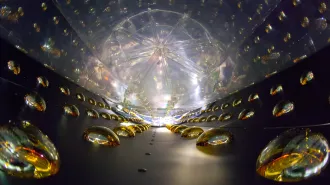Fusion is the source of energy that’s 30 years away, and always will be, skeptics quip.

In principle, the energy released when light atomic nuclei are fused to form heavier ones is much greater than the energy required to coax the light nuclei into fusing in the first place.
That’s how the sun has been shining for billions of years. And ever since the first hydrogen bomb tests in the 1950s, scientists have hoped to reproduce the sun’s magic in a controlled fashion, unlocking an unlimited source of energy. But the dream has been elusive.
With great explanatory skill, Seife, a journalism professor at New YorkUniversity, explains how fusion works and why it is so hard to get power out of it. Seife reviews the parade of hubristic and sometimes comic or outright dishonest claims that fusion scientists have made over the decades.
Edward Teller proposed using hydrogen bombs to widen the Suez Canal, and Martin Fleischmann and Stanley Pons reported producing a tabletop nuclear fusion reaction at normal temperatures and pressures—“cold fusion.”
But there are also lesser-known episodes. In 1951, for example, Argentine President Juan Perón pompously announced that his country had learned to control fusion with a secret material, which scientists suggested was probably baloney.
Although Seife sometimes goes in circles and makes the same point multiple times, the book — his fourth — is enjoyable, and a must-read for anyone who wants to know the story behind ongoing multibillion-dollar attempts at bottling up the sun.
Viking, 2008, 294 p., $25.95







